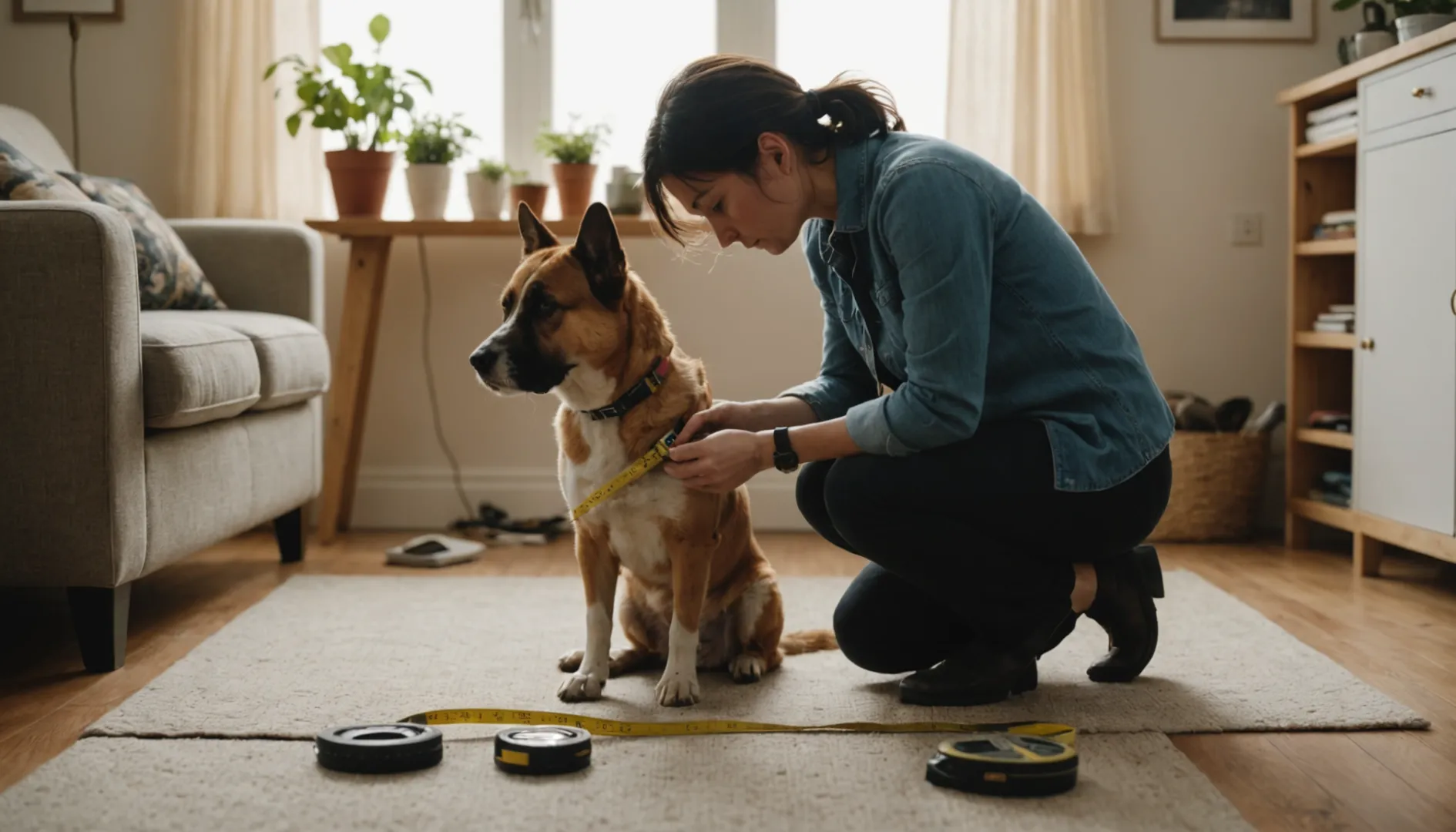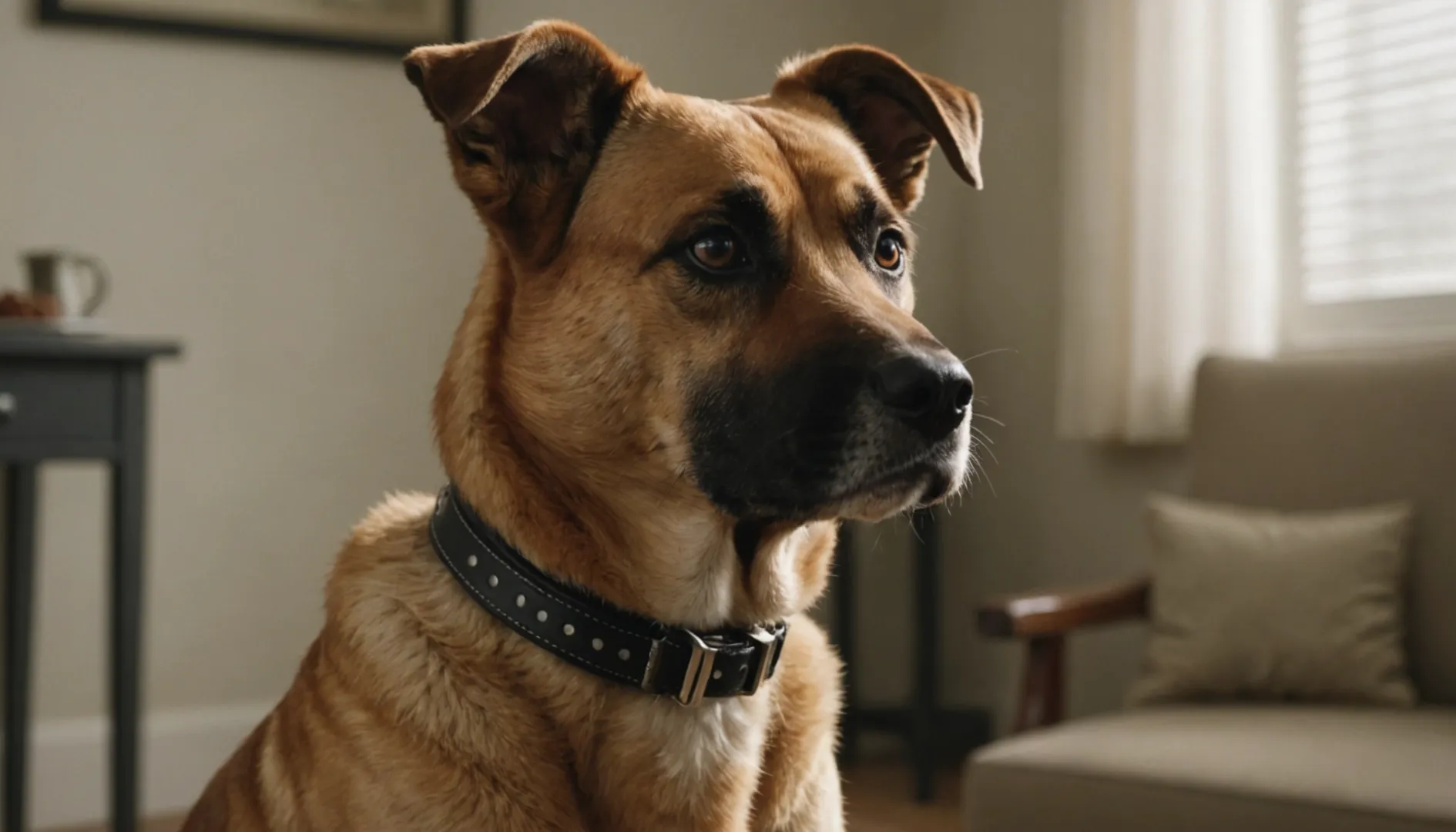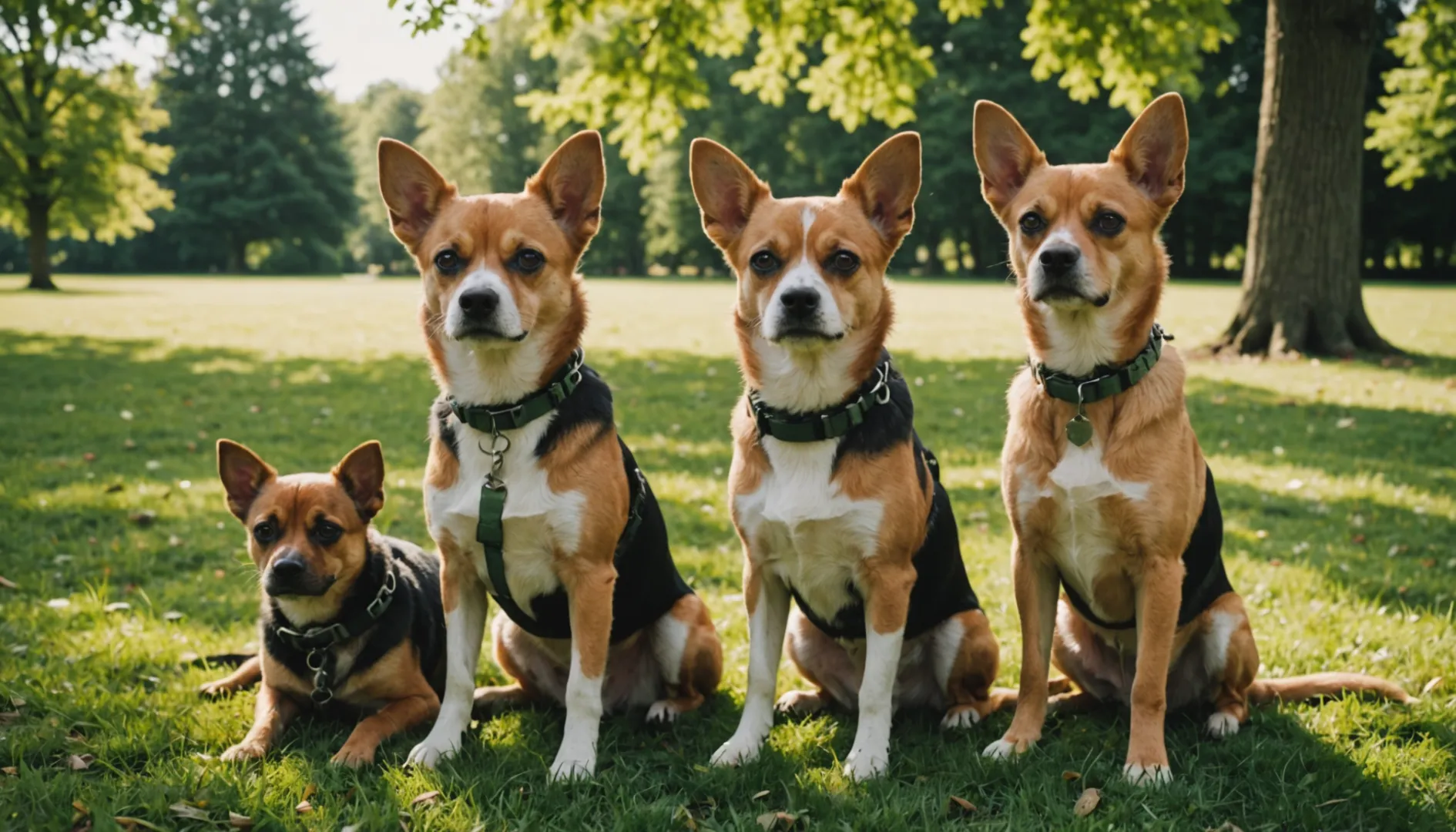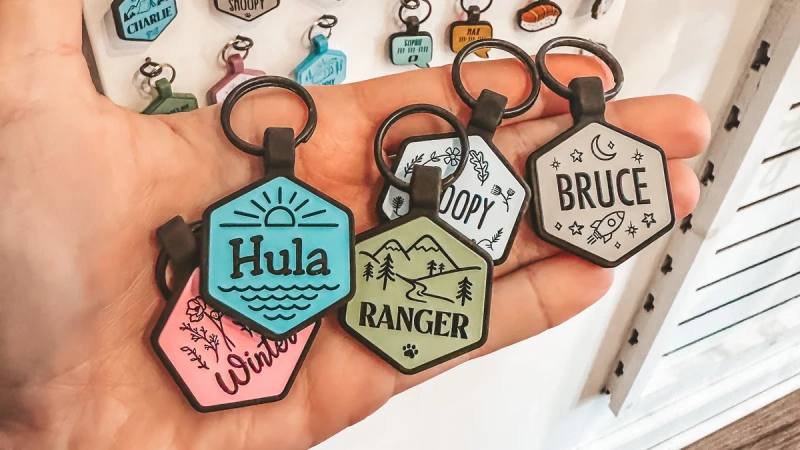
Have you ever wondered if your dog’s collar truly fits them properly? Ensuring a snug yet comfortable fit is essential for their safety and well-being.
Yes, dogs require different collar sizes for optimal fit. Each dog has a unique neck size and shape, necessitating a specific collar size to ensure comfort and prevent injuries. Properly measuring your dog’s neck is key to selecting the right collar.
While understanding that each dog needs a distinct collar size is crucial, the process of choosing the correct fit involves more than just measurements. Delve deeper into how breed, age, and health influence collar sizing and discover expert tips for selecting the perfect collar.
Dogs need different collar sizes for optimal fit.True
Each dog has a unique neck size and shape, requiring specific collar sizing.
How Do You Measure Your Dog’s Neck for a Collar?
Measuring your dog’s neck accurately is crucial for choosing a comfortable and secure collar.
To measure your dog’s neck for a collar, use a soft tape measure to wrap around the base of the neck where the collar will sit. Ensure you can fit two fingers comfortably between the tape and the neck to allow for breathing room.

Why Accurate Measurements Matter
Choosing the right size collar for your dog goes beyond aesthetics; it’s about safety and comfort. An accurately measured collar ensures that it won’t slip off, potentially putting your dog at risk during walks or play. On the other hand, a collar that’s too tight can cause discomfort, skin irritation, and even breathing issues.
Step-by-Step Guide to Measuring Your Dog’s Neck
-
Gather Your Tools: You’ll need a soft measuring tape or a piece of string and a ruler.
-
Find the Right Spot: The collar should sit at the base of the neck, just above the shoulders. This is typically the thickest part of your dog’s neck.
-
Measure with Ease: Wrap the tape measure snugly around this area. If you’re using a string, mark where it meets and then measure the string with a ruler.
-
Allow Some Space: To ensure comfort, place two fingers flat between the measuring tape and your dog’s neck. This allows for some wiggle room without compromising security.
Adjusting for Different Needs
- Puppies: Remember that puppies grow quickly. Opt for adjustable collars that can be loosened as they grow.
- Breeds with Unique Features: Breeds like Greyhounds or Whippets have slender necks, requiring special collar types like martingale collars1 to prevent slipping.
- Health Conditions: Dogs with respiratory issues may benefit from harnesses instead of collars to avoid pressure on the throat.
Common Mistakes to Avoid
- Guessing Sizes: Never guess your dog’s collar size based on breed alone. Even within a breed, individual sizes can vary widely.
- Overlooking Breed Differences: For instance, bulldogs often require wider collars due to their broader necks.
- Ignoring Material Considerations: Some dogs may be allergic to certain materials; ensure that you choose hypoallergenic options if necessary.
A collar should fit tightly without any space.False
A collar should have space for two fingers to ensure comfort.
Martingale collars are ideal for Greyhounds.True
These collars prevent slipping on slender-necked breeds like Greyhounds.
What Are the Risks of Improper Collar Sizing?
Choosing the right collar size for your dog isn’t just about aesthetics; it’s crucial for their safety and health.
Improper collar sizing can lead to discomfort, skin irritation, and even choking hazards. A collar that’s too tight restricts breathing and circulation, while a loose one poses a risk of slipping off, potentially leading to loss or injury. Correct measurement and fit are vital to avoid these issues.

Understanding the Consequences of Tight Collars
When a collar is too tight, it can severely impact your dog’s well-being. The restricted fit can cut into their skin, causing painful abrasions or even deep lacerations over time. This constant friction may lead to hair loss2 and persistent irritation.
Tight collars can also impede normal breathing and swallowing, especially in breeds predisposed to respiratory issues, such as bulldogs or pugs. In extreme cases, prolonged pressure on the neck could damage the thyroid gland or restrict blood flow.
The Dangers of Loose Collars
On the flip side, collars that are too loose pose significant risks as well. A loose collar might easily slip over your dog’s head, particularly if they pull against the leash. This situation not only increases the likelihood of your dog getting lost but also exposes them to accidents or confrontations with other animals.
Moreover, loose collars can get caught on various objects like furniture or fences. Such entanglements can lead to panic and potential strangulation if not quickly resolved.
Factors Influencing Proper Collar Fit
Several factors affect the correct collar size for your dog:
- Breed: Different breeds have varying neck shapes and sizes. For example, greyhounds have slim necks requiring specialized collars like martingales.
- Age and Growth: Puppies grow rapidly, necessitating regular adjustments or replacements to avoid outgrowing their collars.
- Weight Changes: Fluctuations in weight due to diet changes or medical conditions also require frequent size reassessment.
Understanding these factors can help in selecting a collar that not only fits well but also allows room for adjustments.
By recognizing the importance of appropriate collar sizing, you can ensure a safe and comfortable experience for your furry companion.
Tight collars can cause thyroid damage in dogs.True
Prolonged pressure from a tight collar can harm the thyroid gland.
Loose collars never pose a strangulation risk.False
Loose collars can get caught, leading to panic and strangulation.
How Do Different Breeds Affect Collar Size?
Choosing the right collar size for your dog isn’t as straightforward as it seems. Different breeds require distinct considerations.
Different dog breeds significantly influence collar size. Factors such as neck girth, head shape, and fur density vary widely among breeds, necessitating tailored collar options for comfort and safety. Understanding breed-specific traits is crucial for selecting the ideal collar.

Understanding Breed-Specific Neck Sizes
The diversity among dog breeds means there’s a vast range of neck sizes to accommodate when selecting collars. For instance, a Greyhound’s3 long and slender neck requires a different fit compared to a Bulldog’s thick, muscular neck. Typically, smaller breeds like the Chihuahua have delicate necks, necessitating lightweight collars, while larger breeds like the Saint Bernard need robust collars to support their size.
Influence of Head Shape and Fur Density
Breed-specific head shapes also affect collar sizing. Breeds with narrow heads, like the Collie4, benefit from collars with added security features to prevent slipping off. Conversely, breeds with wide heads may need adjustable or flexible collars to ensure they can be easily put on or taken off without discomfort.
Fur density plays another crucial role. A fluffy Pomeranian might need a slightly larger collar to accommodate its thick fur without causing matting or irritation. On the other hand, a Doberman with a sleek coat can wear a more fitted collar without issues.
Age and Growth Considerations
Puppies grow rapidly, so their collar needs will change as they mature. For breeds like the Great Dane, which experience quick growth spurts, adjustable collars are ideal to accommodate their changing size without needing constant replacements.
Senior dogs may also require different considerations. As they age, their neck muscles may weaken, or they might develop skin sensitivities. A soft, padded collar could provide the necessary comfort for older dogs.
Tailoring Collars for Mixed Breeds
Mixed breeds can present unique challenges in collar sizing due to their unpredictable combination of traits. It’s crucial to measure both the neck circumference and consider breed-specific characteristics that may influence collar choice.
To ensure you are selecting the most appropriate collar size for your dog, consider measuring the neck at its base and add two inches for larger breeds or one inch for smaller breeds. Utilizing a sizing chart can also help match your dog’s measurements to the best collar size.
By understanding how breed characteristics influence collar size, you can make informed decisions that enhance your dog’s comfort and safety.
Greyhounds require specialized collar sizes.True
Greyhounds have long, slender necks needing tailored collars for comfort.
All dog breeds can wear the same collar type.False
Different breeds have unique neck sizes and shapes affecting collar fit.
What Types of Collars Are Best for Different Dog Sizes?
Choosing the right collar for your dog involves more than just aesthetics; size and fit are crucial to their safety.
Selecting the right type of collar depends on your dog’s size. Smaller dogs benefit from lightweight, narrow collars, while larger breeds require sturdier options. Ensuring the collar fits properly prevents discomfort and potential injuries.

Understanding Collar Types by Dog Size
When selecting a collar for your dog5, it’s vital to consider their size and breed. Different collars offer various benefits and limitations depending on these factors.
Small Dogs
For smaller dogs, such as Chihuahuas or Dachshunds, choosing a lightweight collar is essential. A narrow band, often less than half an inch wide, can prevent strain on their delicate necks. Materials like nylon or soft leather are ideal as they minimize irritation.
Recommended Collar Types:
- Martingale Collars: Provide gentle control without choking.
- Breakaway Collars: Ensure safety by releasing under pressure if snagged.
Medium Dogs
Medium-sized dogs, including breeds like Beagles or Bulldogs, have more flexibility. Collars need to balance durability with comfort, allowing for secure attachment without being overly heavy.
Recommended Collar Types:
- Flat Collars: Standard choice offering versatility and easy identification tag attachment.
- Harnesses: Excellent for dogs prone to pulling, distributing pressure across the body.
Large Dogs
Large breeds such as German Shepherds or Labradors require strong, durable collars that can withstand their strength and activity levels. Wide bands offer more support and reduce the risk of injury.
Recommended Collar Types:
- Prong Collars: Useful for training but should be used with caution and understanding.
- Chain Slip Collars: Effective for behavioral correction when used correctly.
Considerations Beyond Size
Selecting a collar isn’t only about size—consider your dog’s age, health, and behavior. Puppies might need adjustable collars that grow with them, while senior dogs may benefit from padded options that offer extra comfort.
Special Needs Dogs
Dogs with respiratory issues or sensitive skin require special attention. For these dogs, harnesses might be preferable to traditional collars as they reduce pressure on the neck area.
Understanding these factors and knowing what works best for different sizes ensures your pet’s collar contributes positively to their safety and well-being. Explore options at your local pet store or consult with a vet for personalized recommendations.
Small dogs need lightweight, narrow collars.True
Smaller dogs benefit from lightweight collars to prevent neck strain.
Prong collars are ideal for small dog breeds.False
Prong collars are not suitable for small dogs due to their delicate necks.
Conclusion
Proper collar sizing is vital for your dog’s comfort and safety. Ensure you measure accurately and consider individual factors like breed and health. Invest in the right collar to enhance your dog’s everyday experience.
-
Learn how martingale collars prevent slipping for slender-necked breeds.: The martingale collar allows you to give slight corrections if you’d like, but it is much gentler than a choke (or slip) collar or a prong/pinch collar. This … ↩
-
Learn how tight collars can cause hair loss in dogs.: My dog had this lil bald spot in front of her neck. Her collar isn’t tight, I can easily fit two fingers. I checked her for mites and fleas, and she’s good. ↩
-
Discover why Greyhounds require specialized collar sizes for optimal comfort.: Measure the circumference of your dog’s neck and add an extra 2 centimetres to the result. · XS: 22-26 cm (width 4 cm) · S: 25-29 cm (width 4 cm) · M: 29-33 cm ( … ↩
-
Learn how head shape impacts collar choice for Collies.: I use martingale on my collie. They are adjustable. Your dog will need different sizes as it grows. My four year old wears one that goes from 11 … ↩
-
Discover specific collar recommendations tailored to various dog sizes.: This guide will help you choose a suitable collar for your dog. Different types of dog collars work better for dogs based on their age, breed, and needs. ↩



